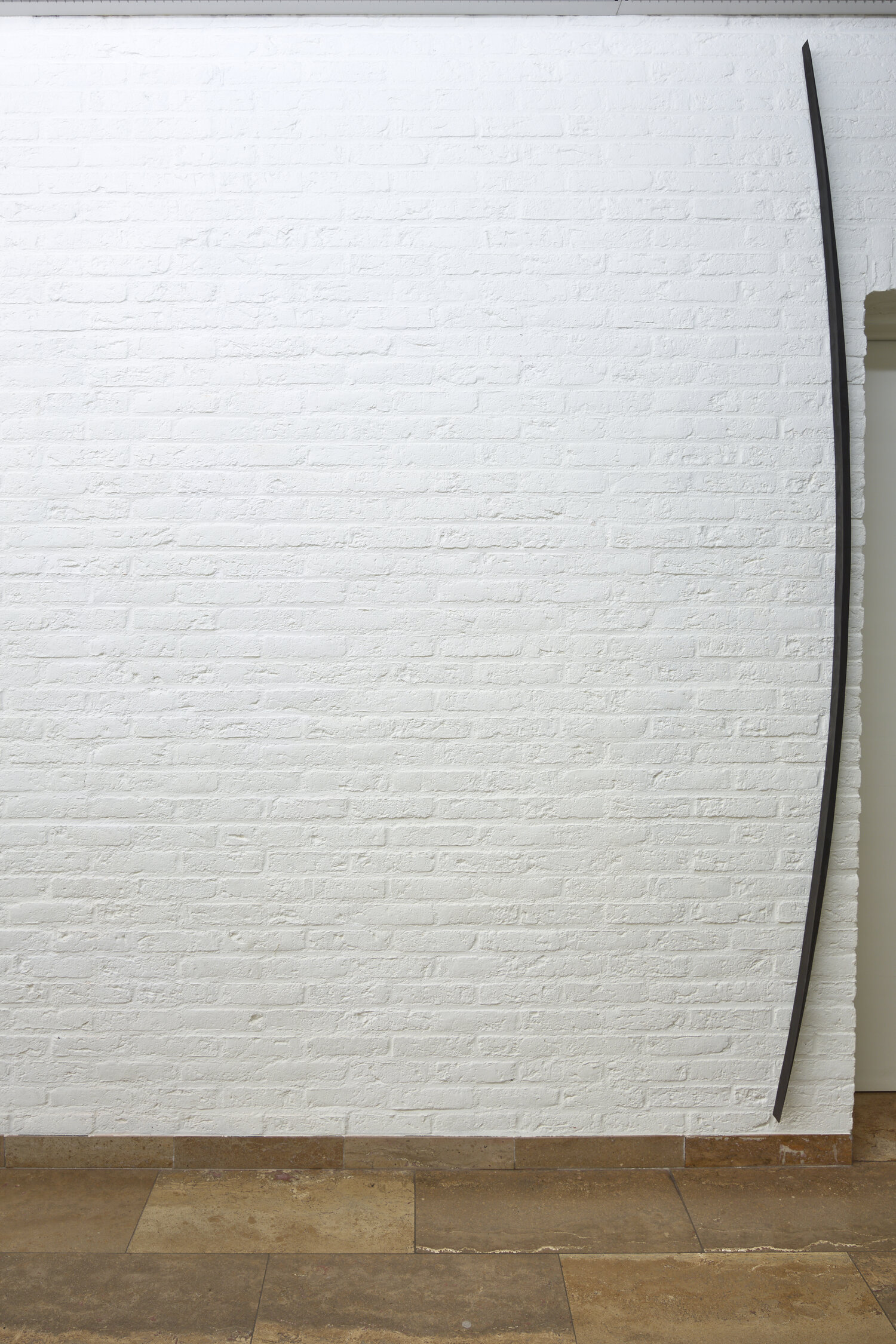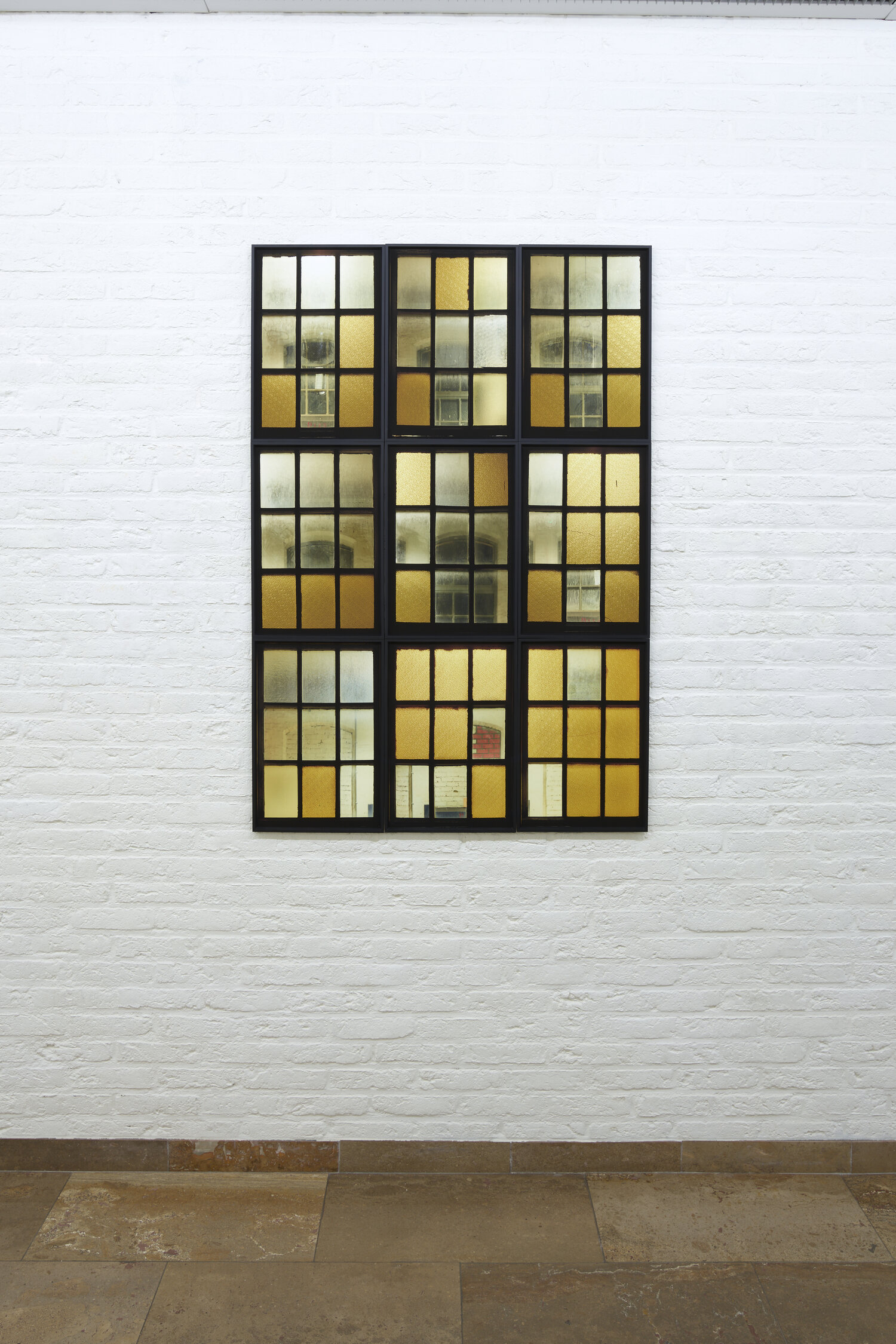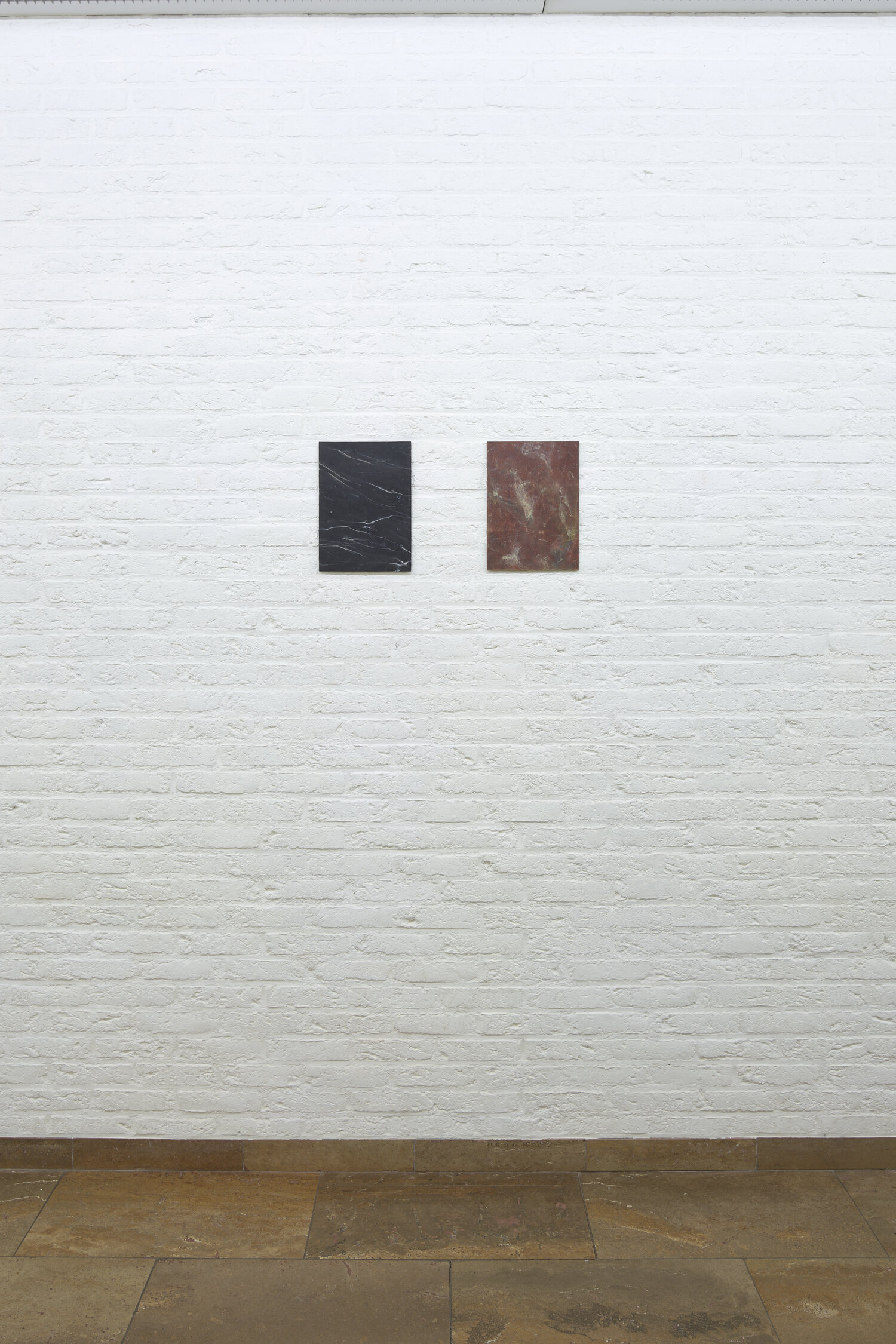Be like speaking to a brick wall
Text for 'On Language', solo show by Sarah SmoldersCC Merksem, Antwerp


“Be like speaking to a brick wall” is a much-known idiom in English. It conveys a sense of disregard, a disjunction between animate and inanimate things under different scales of dominance. Humans are the paramount type of existence implied in such a saying. Humans have ears to listen to whatever is being uttered in the presence of a brick wall. They invented the verbal speech systems in which a given tongue is spoken: they can speak it, they can listen to it, and they have the tools to interpret it. Yet, sometimes they do not listen; they don’t care, which is what it means when one says one is speaking “to a brick wall.” This expression is weirdly close to another famous idiom, “walls have ears,” whose meaning is simultaneously similar and opposite to the former one. To say that “walls have ears” is also a metaphor. It means that someone might be eavesdropping on you while you whisper a secret to a person of your confidence. The saying carries a sense of irony, though. Assuming that walls do not hear what we humans say, it must be another human who is listening. To imagine walls literally with ears is, nevertheless, a much more stimulating exercise of the imagination. It is something of that sort that a comparable, yet not synonymous, phrase in Portuguese says, more graciously, with a longing accent: “oh, what if these walls could speak”!
The sense that space is never bare and that the walls actually have something to tell us is all over the work of Sarah Smolders. She works as a painter whose carrier can be either a wall, an entire room, a building. Her work is hard to describe. She often makes it from a collection of signs found in different locations, according to the specificity of the very sites where she works. Whereas the manifestations of such a practice may vary according to the circumstances of these sites, the importance of connecting the beholder to the act of looking at what is already there remains throughout her work. It can take the shape of a line rendering the mental layout of a space visible. It can be a construction site or, more radically and simply, it can be the dust and the sounds that come from it. By working under the premise that space can be her work, Sarah Smolders often touches the notion of atmosphere: her works bring the atmosphere closer. She brings it into the tangible space of a room, refusing to let it sit on the far horizon, as classic painting had once made us believe this was where it resided.
Consider Nine Windows, a work in which Smolders photographed the old windows she saw every day on the way to the studio. Seen from the outside of a building during the night, the rectangular windows looked like lightboxes. Several reparations the ancient broken glass had composed different patterns in each individual frame’s grids. Because the new glass was different from the original and both qualities of glasses now composed the 3x3 grids, a sequence of colors and distinctive opacities was created over the years, suggesting a kind of text that Smolders had the ability to recognize. Once hidden from inattentive eyes, the signs she collected and made visible through her photos can be easily seen in the work. One version of it shows the windows ordered in line, organized in a sequence in which each photograph refers to one original frame in a one-on-one size. Another version acquires a meta, or fractal character, as the nine different photographs are downscaled under the size that would correspond to that of an individual glass in a one-on-one sized frame. In this second version, the whole set groups at the size of a single original window forming a rhythmic multi-frame. Inserted in a 9x9 grid, the set of nine windows with their individual 3x3 glass structure registers time as a dense cluster of transparencies, opacities, back and foregrounds in space.

Other remarkable works are Smolders’ marble paintings. Originally made in-situ, as visual notes taken from two chimneypieces in Noir de Mazy and Rouge Belge, they were key pieces in former exhibitions. Like many of her works, these two paintings are annotations that give us tools to look by ourselves for the language of a given space. They survive as residual images even after the exhibition that originated them has been dismantled.

Notes on Places, an ongoing series of multiples currently in its second iteration, connects the senses of time and language to the reality of a body working repetitive gestures in relation to a particular space. The 2021 version of the work comprises 250 individual notes made as an ensemble of annotations carrying signs cast by the space of CC Merksem. Each A4-sized piece of paper is unique, although coming from a whole. For Smolders, they are a study on time, observation and repetition, an exercise on grasping the space and its atmosphere over and over again. For the audiences, they remain as an open invitation: an exhibition text made as image rather than written language. Everyone visiting the show can take one, as long as it lasts. These fragments of visual texts offer new, inherently rewarding ways of handling a surface. Bricks might speak, after all. As in a foreign language, it takes only time, exercise and a little empathy to devise what it murmurs.
Laila Melchior
March 2021